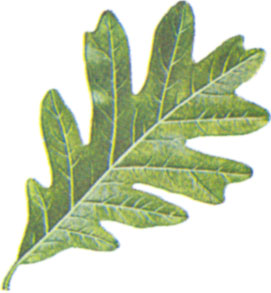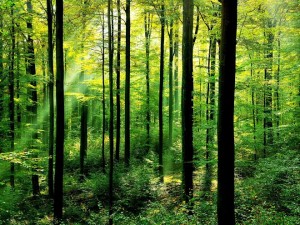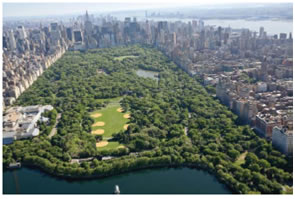
Trees improve air and water quality, reduce flooding, reduce cooling and heating energy needs, increase property values and improve the quality of life for people and wildlife around them. They line our city streets and highways; make our towns, parks and recreation areas beautiful; and add life a concrete jungle. Forests around our cities protect and support our water sources, provide habitat and respite for creatures of all kinds, and moderate our climate. Forests of all kinds are an essential element of our green infrastructure systems.

Photo courtesy of worldwildlife.org
Forests: Forests represent about 30 percent of the world’s land space. Forests are defined as mature land with flora that provide ecosystem services. Part of the ecosystem services provided by forests, is supporting a majority of the world’s biological diversity. Maintaining biological diversity is important because without it, the world would have a harder time recovering from natural disasters and maintaining essential ecological processes. In addition, forests provide species with habitats, protection from predators and outside disturbances. Without forests, many species may decline and become vulnerable to extinction. Additionally, many communities depend on forests directly or indirectly for a wide range of forests based goods and services. For example, forests can be the foundation of economies, creating job opportunities, supplying environmental services such as clean water and providing tourist destinations and recreational space for residents.

Photo courtesy of USDA
Urban Forestry: Urban forestry is the management of the tree populations in urban locations. Beyond beautification, the trees are an integral part of the urban infrastructure needed to improve the functionality of the urban environment. According to American Rivers, planting trees that are indigenous to an area that can reduce air pollution and stormwater runoff. A mature tree with a 30-foot crown can intercept 4600 gallons of water a year.
In addition to the numerous environmental benefits, trees also offer economic benefits, such as increasing property value. The U.S. Environmental Protection Agency (EPA) reported that in Philadelphia, a green retrofit program that converted unsightly abandoned lots into “clean & green” landscapes resulted in economic impacts that exceeded expectations. The report calculated that vacant land improvements led to an increase in surrounding housing values by as much as 30 percent. This translated to a $4 million gain in property values through tree plantings and a $12 million gain through lot improvements.
Green infrastructure techniques can also support the growth and implementation of healthy urban, suburban and rural tree canopies. For example, according to the U.S. Department of Agriculture Forest Service, using the green infrastructure technique of structural soils, which provide space for tree roots to grow under paved surfaces but can still support the weight of cars, can increase the porosity of the area by 30 to 35 percent. Here the tree canopy is increased, so runoff is lower, water storage happens under the pavement, and water quality is improved compared to direct runoff.
Most importantly, forests are essential for water management. According to the Montreal Process, forest ecosystems play an important role in the regulation of surface and groundwater flow and, together with associated aquatic ecosystems and clean water, they are essential to the quality of human life.
Resources:
Watershed Forestry Resource Guide - Produced by the Center for Watershed Protection in partnership with the US Forest Service Northeastern Area State and Private Forestry program, this website was developed as a clearinghouse for the many tools and training materials that have been developed to advance the management of urban forests for watershed health.
Vibrant Cities & Urban Forests: A National Call to Action - Through collaboration between the Sustainable Urban Forest Coalition and the US Forest Service, a group of 25 national leaders in urban forestry has assembled a compelling report and 12 concise recommendations to mobilize community and city leaders and citizens towards improving the nation’s urban ecosystems, and urban forests in particular.
Effects of Street Trees on Urban Heat Islands - New York Dept. of Environmental Conservation provides a short explanation of urban heat island effect and how urban forests can mitigate those effects.
What is a Tree Worth? - Author and public policy scholar at the Woodrow Wilson Center in 2011, Jill Jonnes conducted a tremendous amount of resarech into the historical value of urban forests and wrote this very thoughtful article on the value of trees in today’s urban environments.
High-performance urban forestry for green infrastructure - Matthew Gordy is a landscape architect and design critic for studios at the Harvard Graduate School of Design. In this blog post, he explains the basics of designing and managing high performance urban forests as part of a green infrastructure system.
